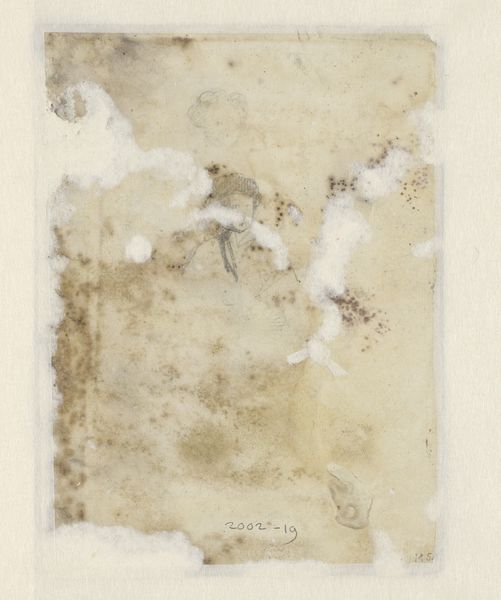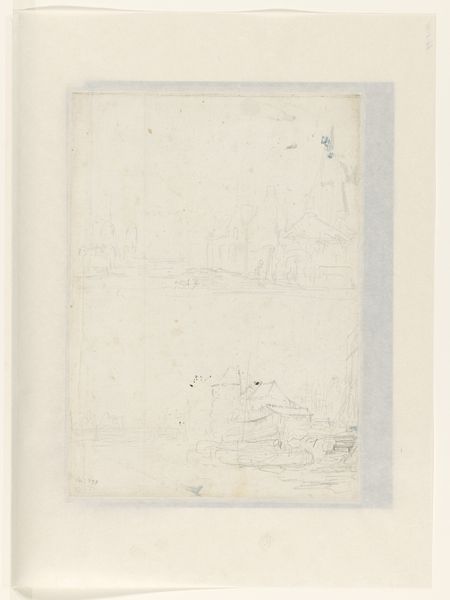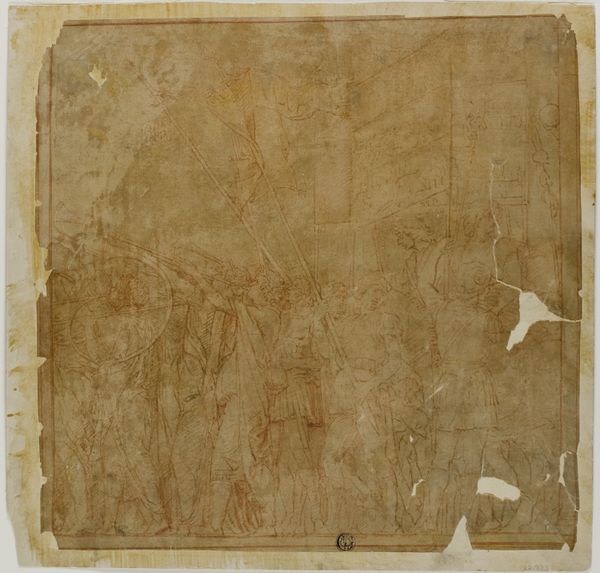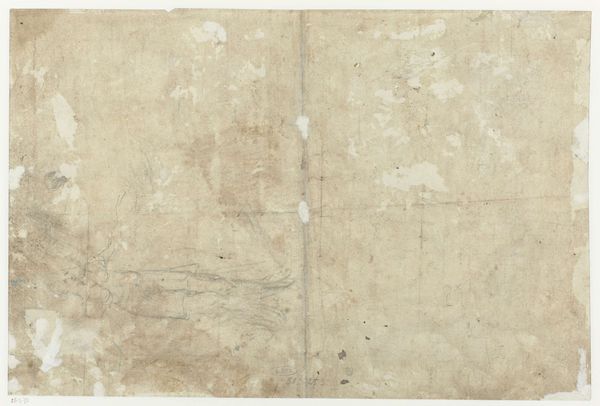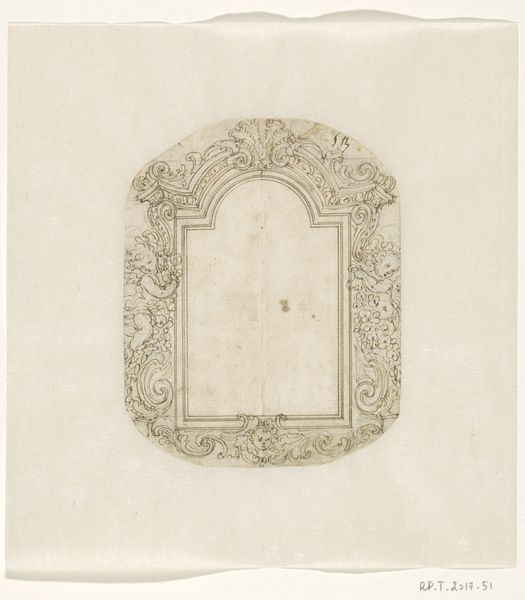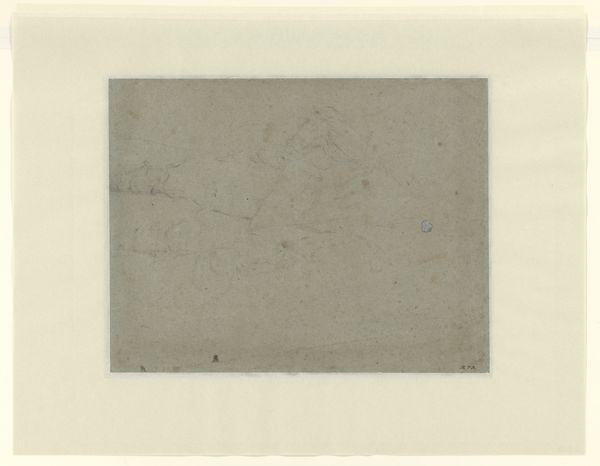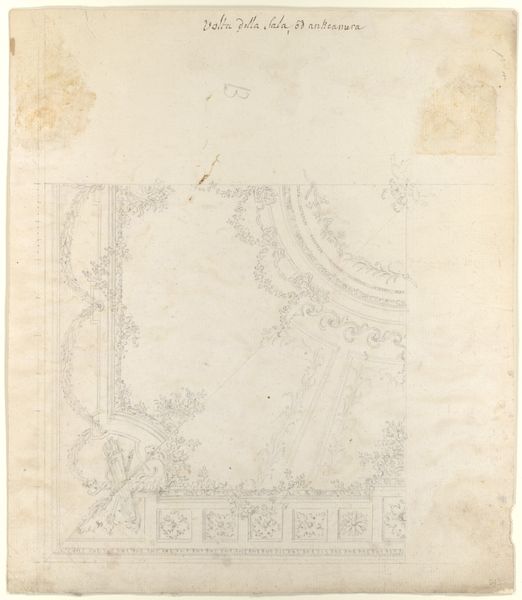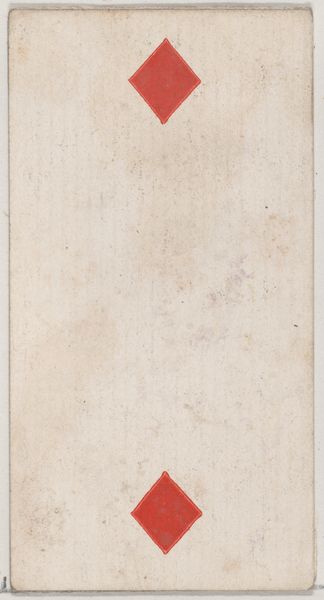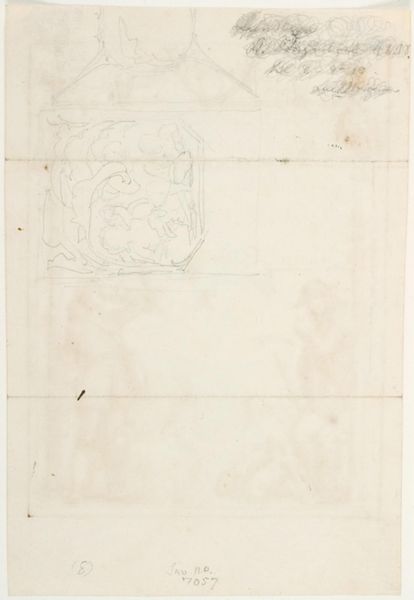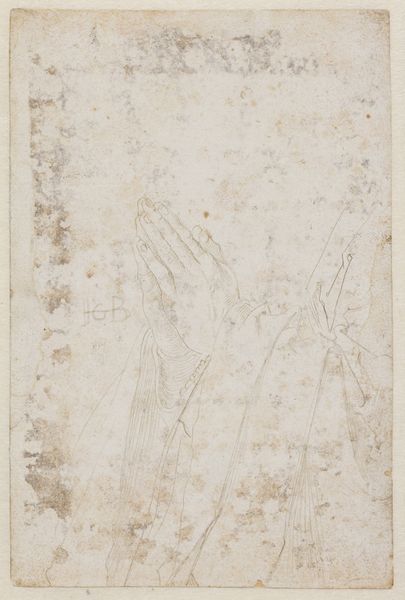
drawing, pencil
#
drawing
#
baroque
#
form
#
pencil
#
line
#
decorative-art
Dimensions: height 154 mm, width 208 mm
Copyright: Rijks Museum: Open Domain
Curator: Let's turn our attention to this pencil drawing, titled "Ornamentschets," crafted in 1753 by Gerardus Josephus Xavery. The term 'schets' suggests a sketch or preparatory study. Editor: Oh, I like the antique feel! It gives me a sort of ethereal quality. It's so subtle and elegant in its design. Like a faded dream, you know? Curator: Precisely! These kinds of ornament drawings played a pivotal role in the decorative arts of the period. Xavery was likely experimenting with and developing ornate patterns. When we look at ornamental studies such as this one, it's helpful to understand them within a larger history of labor. Think about artisans replicating these patterns in various crafts, or perhaps architecture, or bookbinding. The design is just one point within an entire system of production. Editor: Hmmm... Production! See, I immediately imagined someone, maybe an artist, holed up in a cozy little studio, obsessing over tiny details while listening to some weird classical music. The swirls and curves feel so organic! It's easy to get lost in them. Almost hypnotic. Did Xavery maybe zone out completely? Curator: I see what you mean by 'organic.' It fits well with the general aesthetic conventions of the Baroque style, that being characterized by a flair for the elaborate, an emotional resonance through detail, and an affinity for asymmetry. These ornaments are testaments to those tendencies. What could they decorate, one might wonder. Ceilings, perhaps, or maybe furniture? Editor: Totally, I bet these ornaments could’ve jazzed up everything from furniture to fancy teacups. I feel like I’m peering into some hidden world. There are tons of things one might make if armed with this guide, you know? Curator: Indeed. There is a practical side that served social functions in his time. The very nature of ornament, then, carries connotations with identity, with status, and with established hierarchies of aesthetic production. It’s a nexus of labor, value, and representation. Editor: You know, even though I'd probably make a huge mess trying to copy that drawing, I totally get that feeling that one could use them. I guess even old sketches can still feel relevant in their way. Curator: That feeling of possibility might be a great connection point.
Comments
No comments
Be the first to comment and join the conversation on the ultimate creative platform.
